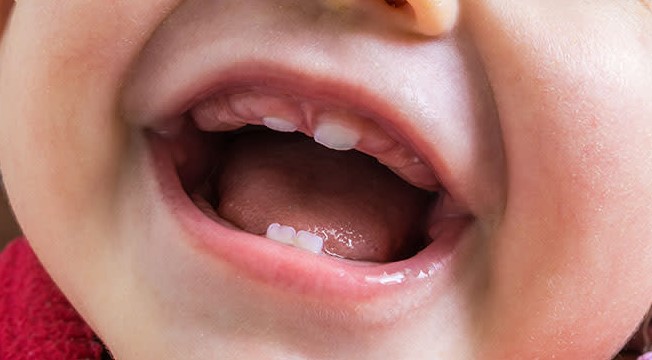A lip tie in a newborn refers to a condition where the tissue connecting the upper lip to the gum is tighter or more restrictive than usual. This can sometimes affect a baby’s ability to breastfeed effectively and comfortably. Understanding and addressing lip ties in newborns is crucial for ensuring proper feeding and overall well-being during these early stages of life.

Newborns bring joy, wonder, and a sense of new beginnings to families. However, amidst the excitement, it’s important for parents and caregivers to be aware of various aspects of their baby’s health and development, including potential medical conditions. One such condition that might arise is a lip tie. In this article, we’ll delve into what lip ties are, their causes, symptoms, and available treatment options.
What is a Lip Tie?
A lip tie is a congenital condition where the tissue connecting the upper lip to the upper gum is unusually tight, thick, or short. This condition, medically known as “labial frenulum,” can vary in severity from mild to severe. The tight tissue restricts the movement of the upper lip, which can have implications for breastfeeding, oral hygiene, and speech development as the child grows.
Causes of Lip Ties:
The exact cause of lip ties is not fully understood, but it is believed to be related to genetic factors. If a family member, such as a parent or sibling, has had a lip tie, there’s a higher likelihood that a newborn might also have one. Some studies suggest that certain environmental factors during fetal development could contribute to the formation of lip ties.
Symptoms of Lip Ties:
Recognizing the symptoms of a lip tie is essential for early intervention and management. Here are some common signs to watch out for:
1. Breastfeeding Difficulties: One of the primary concerns with lip ties is the impact on breastfeeding. Babies with lip ties might have trouble latching onto the breast properly due to limited lip movement. This can lead to poor milk transfer, painful breastfeeding experiences for the mother, and inadequate nutrition for the baby.
2. Gum Recession: In severe cases of lip tie, the restricted movement of the lip can cause the gum tissue to recede or pull away from the teeth. This can potentially lead to dental problems as the child grows.
3. Speech Issues: As a child’s oral cavity develops, a lip tie could hinder proper speech development. The limited movement of the upper lip might affect the child’s ability to form certain sounds and pronounce words correctly.
4. Oral Hygiene Challenges: A lip tie can make it difficult to clean the upper front teeth and gumline properly. Inadequate oral hygiene might contribute to dental issues such as cavities and gum disease.
Diagnosis:
A pediatrician, lactation consultant, or a dentist with experience in infant care can diagnose a lip tie during a physical examination. They will assess the appearance and movement of the baby’s upper lip and check for any restrictions caused by the tight frenulum.
Treatment Options:
The treatment for lip ties depends on the severity of the condition and the potential complications it presents. Here are some common treatment options:
1. Watchful Waiting: In some cases, a mild lip tie might not cause significant issues and might resolve naturally as the child grows. Regular monitoring by a healthcare professional is essential to ensure that the condition doesn’t worsen.
2. Frenotomy: If a lip tie is causing breastfeeding difficulties or other concerns, a simple and quick surgical procedure called frenotomy might be recommended. During a frenotomy, the healthcare provider uses sterile scissors or a laser to release the tight tissue, allowing for better lip movement.
3. Frenuloplasty: In cases of more severe lip ties, where the frenulum is thicker or affects multiple structures, a more extensive surgical procedure known as frenuloplasty might be performed. This involves a small incision to release the restricted tissue and might require local anesthesia.
4. Oral Exercises: Alongside or following surgical intervention, oral exercises prescribed by a healthcare provider can help improve lip mobility and strengthen oral muscles.
Aftercare and Recovery:
After any surgical procedure, proper aftercare is crucial to ensure optimal healing and prevent complications. For infants, this might involve gently massaging the surgical site to prevent reattachment of the tissue. Breastfeeding mothers might need to work with a lactation consultant to re-establish proper latch and feeding techniques.
Conclusion:
Understanding lip ties in newborns is essential for parents and caregivers to provide the best possible care for their child’s health and development. Recognizing the signs and symptoms early on can lead to timely interventions, preventing potential breastfeeding difficulties, speech issues, and dental problems. With advancements in medical knowledge and surgical techniques, healthcare professionals are well-equipped to diagnose, treat, and support families through the journey of managing lip ties in newborns. Always consult with a qualified healthcare provider for accurate diagnosis and appropriate treatment options tailored to the individual needs of your child.